What’s the best golf advice you ever received? That’s the question being answered this month by Dave Pelz, one of the game’s top teachers, as well the writers at golf’s leading website, The A Position. For Pelz (below)—whose work on and around the greens has earned him the nickname “Professor Putt”—his most important lesson came from another professor and it has influenced every bit of teaching Pelz has done to this day. For the rest of us, the sage suggestions have been more prosaic, involving everything from how we fold our arms on the backswing to how we handle windy conditions and even call penalties on opponents. But the overwhelming area of ace advice involves how we use our minds, whether to focus more sharply or simply enjoy the game more.
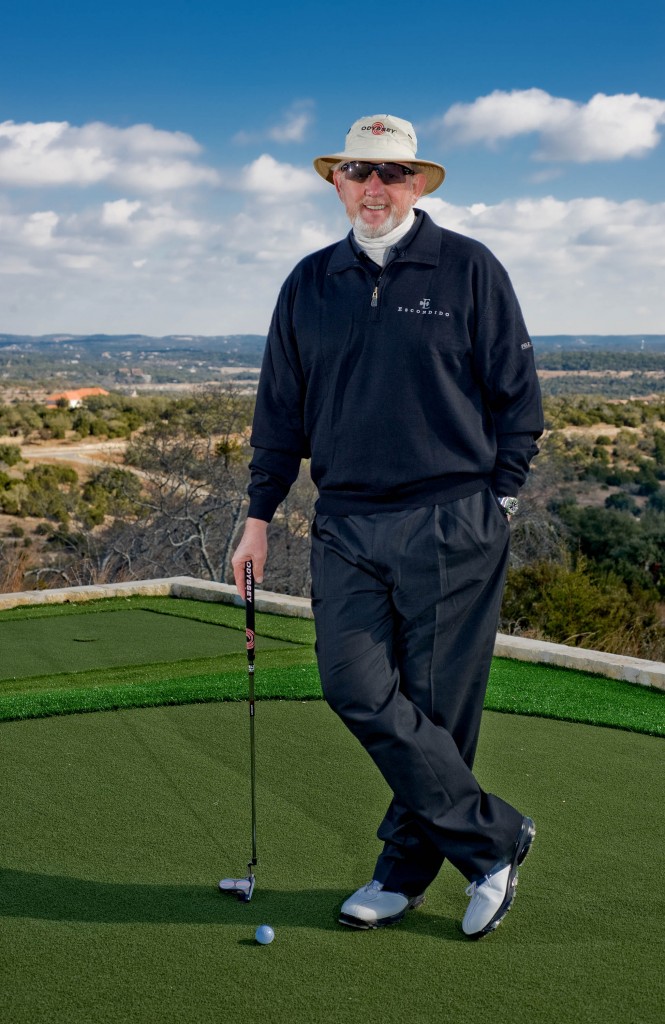 The best advice I ever got came from a physics professor in college who told me that if you can’t test it, measure it, or confirm it, don’t teach it. Years later that remains the basis for all my teaching, my schools, and my books. How does that differ from other golf instruction? It used to be that if Jack Nicklaus, Ben Hogan, or some other great player said something it would become a law of the game. But what a player said might just have been what he was thinking or feeling at that moment, which hardly makes it a fact and certainly not applicable to every golfer. So I only teach what I can test, measure, and confirm.
The best advice I ever got came from a physics professor in college who told me that if you can’t test it, measure it, or confirm it, don’t teach it. Years later that remains the basis for all my teaching, my schools, and my books. How does that differ from other golf instruction? It used to be that if Jack Nicklaus, Ben Hogan, or some other great player said something it would become a law of the game. But what a player said might just have been what he was thinking or feeling at that moment, which hardly makes it a fact and certainly not applicable to every golfer. So I only teach what I can test, measure, and confirm.
—Dave Pelz, pelzgolf.com
Without question, my finest golf advice didn’t come from a top golf instructor or professional but instead from Michigan friend and hypnotherapist, Zoe Alpern. While waiting for slow players ahead on the course, we discussed my lack of aces over 30 years of competition. Instead of commiserating, she scolded me. “You’re not trying hard enough. You have to see the ball go into the hole before you swing. Not close, not on the green, but rolling into the cup.” I obeyed. Subsequent par-threes yielded birdies from 2 inches and 10 feet. Zoe’s response? “You may not get that ace today but you’ll get it this year—and soon.” Nine days later during the Michigan Women’s Amateur, my 2-iron one-bounced into the cup from 191 yards. Since then, I’ve applied this very specific focus and have had three more aces and hundreds of near-misses as well as eagles, pitch-ins, and many long putts.
—Janina Jacobs, janinajacobs.com
The best advice anyone ever gave me came through the television screen. Davis Love III was talking about a resurgence of his game a few years back and mentioned that he felt it was because he had reached a point in his life where the game didn’t mean life or death to him anymore. He had a great family, more money than he knew what to do with, and was comfortable in his own skin. This made him relaxed and he no longer defined his worth by the way he played golf. Freed of self-imposed fear of failure on a golf course, Love began to play with more abandon and found the game fun again, not something that he had to do well. I’ve tried to take that to the course. We worry far too much about score and what we shot today as opposed to yesterday or the day before. I’m an amateur and shouldn’t have lofty expectations for my game. I enjoy the feeling of a well hit six-iron or a good drive that clears a bunker and sets up a wedge to the green. If I don’t play well, so be it. I’ve got a home, a family to enjoy, caring friends, and a job. Just like Davis Love.
—John Torsiello, torsmangolf.com
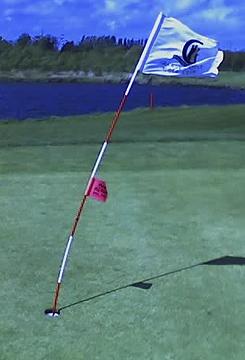 Growing up in Texas where it does tend to get windy, the best advice I ever received was to remember this sage saying: “When it’s breezy, swing easy.” Different professionals explained that trying to force a shot and hit it harder could result in a steeper angle of attack that caused the ball to balloon or to exaggerate whatever slice or hook spin you happened to put on the ball. Instead, they suggested choking down on the club and using a three-quarter swing to sweep the ball off the turf. Add a club for each 10 mph of wind was another suggestion. When the wind came from the side, I was told to take one more club than usual, fading it into a right-to-left wind and drawing it into a left-to-right wind. You could usually aim at the pin as the wind would blow the ball back toward it. Other adjustments included moving the ball back a “smidge” in my stance and taking a wider stance so I could maintain balance. On the greens, the advice was to not ground the putter if at all possible to avoid the ball moving and creating a penalty situation.
Growing up in Texas where it does tend to get windy, the best advice I ever received was to remember this sage saying: “When it’s breezy, swing easy.” Different professionals explained that trying to force a shot and hit it harder could result in a steeper angle of attack that caused the ball to balloon or to exaggerate whatever slice or hook spin you happened to put on the ball. Instead, they suggested choking down on the club and using a three-quarter swing to sweep the ball off the turf. Add a club for each 10 mph of wind was another suggestion. When the wind came from the side, I was told to take one more club than usual, fading it into a right-to-left wind and drawing it into a left-to-right wind. You could usually aim at the pin as the wind would blow the ball back toward it. Other adjustments included moving the ball back a “smidge” in my stance and taking a wider stance so I could maintain balance. On the greens, the advice was to not ground the putter if at all possible to avoid the ball moving and creating a penalty situation.
—James McAfee, jamesamcafee.com
It was something shared by Glenn Johnson that has stuck with me through the years. I don’t even recall how the subject came up but Johnson, a Michigan Golf Hall of Fame member, was talking about hard-earned lessons from playing match-play competition. In so many words, Johnson said when you’re in competition and happen to see your opponent engage in some questionable rules-violating behavior, you must immediately take charge of the situation and voice your concern, even if you’re not exactly certain of the rule or even what you saw. “Otherwise what you observed will gnaw at you and affect your game and possibly even the match,” said Johnson. “You must reverse the situation and place the situation’s mental burden on your opponent.” I only followed Johnson’s wise and golf-savvy advice once. Later that night and still going over our round while trying to sleep on the couch, I wondered: “Why in the hell did I ever bring that up to my wife?”
—Terry Moore, teemoore.com
Teaching pro at Kaanapali, after having to drop a new ball and sticking it close: “Any dumb shit can do it the second time.” Words to live by.
—Larry Olmsted, larrygolfstheworld.com
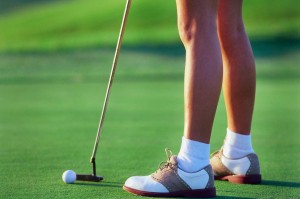 When I was a kid, I was practicing on the putting green and like any kid I was delighting in hitting long putts rather than the short putts I should have been practicing. In utterly sophomoric fashion, I hit a 35-footer, left it about 18 inches from the hole, and threw in a little self-satisfied fist pump for the effort. The local pro, noticing my reaction to the result, asked what my thought process was when I approached the putt. I said I was trying to get it into a three-foot ring around the hole. He then asked me if I knew what an archer aimed at when he drew back his bow. I said “the bulls-eye”. He said “Then be an archer, and try to hit the bulls-eye on every putt. This ain’t horseshoes.” I became a significantly better putter for the rest of my life because of that one piece of advice.
When I was a kid, I was practicing on the putting green and like any kid I was delighting in hitting long putts rather than the short putts I should have been practicing. In utterly sophomoric fashion, I hit a 35-footer, left it about 18 inches from the hole, and threw in a little self-satisfied fist pump for the effort. The local pro, noticing my reaction to the result, asked what my thought process was when I approached the putt. I said I was trying to get it into a three-foot ring around the hole. He then asked me if I knew what an archer aimed at when he drew back his bow. I said “the bulls-eye”. He said “Then be an archer, and try to hit the bulls-eye on every putt. This ain’t horseshoes.” I became a significantly better putter for the rest of my life because of that one piece of advice.
–Casey Alexander, caseyalexandergolf.com
Part of my appreciation for the advice in question stems from its juxtaposition: In the course of researching a 5,000-word article—the multi-faceted “spring training for golf” treatment—for Fast Company, I’d spoken with short-game gurus, yogis, equipment geeks, performance pundits, all manner of game-improvement luminary. Thus was it comic relief to stumble upon a quote, not from one of the game’s esteemed visionaries but from Don Rickles, who said, “It wasn’t until I accepted that I was really bad that I was able to actually enjoy golf.” Sure, this flies in the face of traditional golf ethos, which, via handicapping, embraces the notion of constantly monitoring one’s playing prowess. But it doesn’t seem far afield to suggest that aspects of said ethos have contributed to difficulties in attracting new players. Performance anxiety could be one of them, you hockey puck.
—Tom Harack, tomharack.com
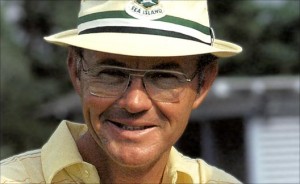 Golf can appear to be a slow game, but it is amazing how quickly things can happen—often unintended. When I was about to begin playing the mini-tours, the late Davis Love, Jr. (right) gave me the following advise. When faced with a challenge, slow down, take a deep breath, and collect yourself. This has helped me not only in competitive golf, but also in the boardroom and beyond. (Things could always be worse.) They say that leaders remain calm when others are losing their cool, so if you want to be the leader of your golf game, it pays to pause a second, take a deep breath, observe, measure your options, and then confidently resume without delay. A good lesson for life as well!
Golf can appear to be a slow game, but it is amazing how quickly things can happen—often unintended. When I was about to begin playing the mini-tours, the late Davis Love, Jr. (right) gave me the following advise. When faced with a challenge, slow down, take a deep breath, and collect yourself. This has helped me not only in competitive golf, but also in the boardroom and beyond. (Things could always be worse.) They say that leaders remain calm when others are losing their cool, so if you want to be the leader of your golf game, it pays to pause a second, take a deep breath, observe, measure your options, and then confidently resume without delay. A good lesson for life as well!
—Robert Fagan, robertfagan.com
My golfing buddy John and I were playing the short, perky Kahneeta Resort golf course in Central Oregon with the head professional on a day when we basically sprayed nearly all our shots into the sage and scrub. Though we were both decent players, we just couldn’t seem to not hit it sideways during that round. We topped drives, hooked and sliced approaches, and knocked short putts eight feet past the hole. We bladed and shanked. We’d been late for our tee time to begin with and it was getting toward dusk and unclear whether we’d even finish before dark when the pro, after watching me launch yet another tee shot into the shrubbery, asked if I wanted a tip. Thinking he’d discovered the swing flaw that had ruined my game and was going to cure it with a single simple piece of advice, I said sure. Without missing a beat or cracking a smile, he answered, “Start earlier.”
—Jeff Wallach, jeffwallach.com
During the halcyon days when I was travel editor of Golf Magazine, I’d assign myself the task of visiting Hawaii every other year just to make sure the beaches were sandy and the pineapples sweet. For many reasons, my favorite resort was Mauna Kea on the Big Island. In the late 1980s, and ‘90s, the resort’s director of golf was J.D. Ebersberger. An Aloha Section standout as a player, he was also a very fine teacher in demand by the corporate CEOs who patronized Mauna Kea. I was struggling with my upright swing one day when he said, simply, “Brian, allow your arms to fold on the backswing.” I did. What a difference. Rocketed drives with a slight draw were the immediate result. So were crisply struck iron shots that streaked to the pin. It’s a tip that serves me well to this day. I’m thinking of getting it tattooed to my forearm. Maybe use a surfboard and hula girl motif.
—Brian McCallen, brianmccallen.com
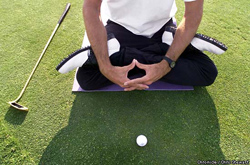 During a lesson for a series of articles I wrote with former Brattleboro (Vermont) Country Club pro Bill Tooley, I was displaying more than usual frustration with my efforts. When we were done and I had walked away Tooley called out to me: “You’re better than you think you are!” I’ve been deconstructing the timing, meaning, and need for that comment ever since, but always in a mood of delight.
During a lesson for a series of articles I wrote with former Brattleboro (Vermont) Country Club pro Bill Tooley, I was displaying more than usual frustration with my efforts. When we were done and I had walked away Tooley called out to me: “You’re better than you think you are!” I’ve been deconstructing the timing, meaning, and need for that comment ever since, but always in a mood of delight.
—Tom Bedell, tombedell.com
From Grant Rogers, Director of Instruction at Bandon Dunes: “You might not shoot the best score in your group, but you can still be the one who has the most fun.”
—Stephen Goodwin, stephenhardygoodwin.com
